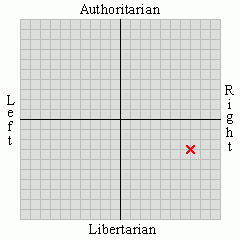
In ancient calendars, including those of the Romans, the Celts, the Germans and the Slavs a gap of twelve days occurs in mid-winter, now the Twelve Days of Christmas, celebrated in the song. This was perceived in a sense as a kind of fracture in time, a fracture that allowed the boundaries between the living and the dead to dissolve.
In the German lands it was known as Zwolfen, a time when Woden and Frigg-or Odin and Freya-held forth. For witches it was a favoured time for the Wild Hunt and for ordinary mortals a time of wild merry-making, gift-giving, spell-casting and divination. In the English court prior to the Puritan revolution of the seventeenth century, when Christmas was banned, proceedings were governed by a kind of anti-king known as the Lord of Misrule. By the pagan calendar this was, of course, Yule.
Christmas continues to be rich with pagan residues and traditions. Father Christmas, or Santa Claus, though now generally identified with Saint Nicholas, on very insecure grounds, it has to be said, has a lineage going back to Odin, the centre of the evergreen cult among the Nordic peoples, and the Roman god Saturn, also depicted as father Time, whose midwinter festival, known as Saturnalia or the Feast of Ops, was a time of gift-giving, especially to children.
In general December was a time for dancing, singing and feasting. It was a time also of masquerade and mummery, when men dressed as animals and as the Horned God, the chief figure of the fertility cult. The Horned One travelled around carrying a small broom of birch twigs intended to confer greater fertility, his face blackened with soot to suggest that he had just come down the chimney, yet another link with Father Christmas! In the Dutch tradition Black Peter, who accompanies Saint Nicholas, is one obvious descendant of the Horned God.
There is so much more in Christmas that belongs to the pagan world, including decorated evergreen trees, the Yule Log, associated with Frigg, the wife of Odin, the boar as the Yule animal, an offering to the goddess and, of course, mistletoe, the golden bough.
Witches also have their part to play. In Italy Befana, who flies through the air on a broom, is the gift-giver to children, not Father Christmas. In Germany Lutzelfrau, who prefers to receive than to give, also flies through the air, causing havoc in households that have omitted to leave small offerings for her. In other parts of Germany and Austria children go from door-to-door often dressed as witches, begging small treats in the name of Perchta, the witch-goddess. Perchta is also joined by Hulda, Herta and Freya at this time of year in the aforementioned Wild Hunt, sometimes joined by Odin. Yes, wild times, wild things, wild creatures!





















This is exactly why the story of the Green Man, the Jolly Green Giant appears in the Surah [chapter] devoted exclusively to Al Kahf [The cave] in The Holy Quran. It narrates the story of the early cryptic Christians who first arrived in Britain. Hazrat Alhajj Hafiz Hakim Maulana Nooruddin - Khalifatul Masih I (1843 - 1914) believed (via Geoffrey of Monmouth) that these are the People of the Caves refered to in this chapter of the Quran. This is largely due to a neorealist view of history as being cyclical. There is an historical parallel with the decline and fall of the British Empire and the time of Jesus' first descent and the decline and fall of the Roman Empire. The removal of the seat of Islamic Caliphate to London 25 years ago as a result of insane persecution also parallels with that of the early Christians to Europe as a result of severe Roman persecution.
ReplyDeleteMaybe I'm digressing, but it all harks back to the Green Man, you see.
This is a dimension that I had not considered.
ReplyDelete